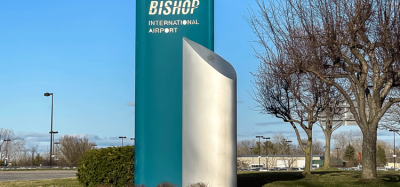Airports’ IT spending to top $4.6 billion by 2023, new analysis claims
- Like
- Digg
- Del
- Tumblr
- VKontakte
- Buffer
- Love This
- Odnoklassniki
- Meneame
- Blogger
- Amazon
- Yahoo Mail
- Gmail
- AOL
- Newsvine
- HackerNews
- Evernote
- MySpace
- Mail.ru
- Viadeo
- Line
- Comments
- Yummly
- SMS
- Viber
- Telegram
- Subscribe
- Skype
- Facebook Messenger
- Kakao
- LiveJournal
- Yammer
- Edgar
- Fintel
- Mix
- Instapaper
- Copy Link
Posted: 6 June 2018 | International Airport Review | No comments yet
Biometrics, blockchain, analysis and artificial intelligence are all contributing to a growth in IT spending.


BIG MONEY: The growing number of technologies falling under the IT heading has driven a burst of spending
Airports worldwide will be spending US$4.63 billion by 2023 as the digital revolution marches on.
Frost & Sullivan’s recent analysis, Digital Transformation in Airports, reveals that increased passenger traffic and global capacity constraints will drive up airport IT spending over the next five years. Airports are developing their digital transformation roadmap in line with strategic planning activities to address key performance indicators across all areas of the airport operation.
Digital transformation in airports is creating growth opportunities across the globe with renewed commitment to infrastructure modernisation and expansion creating a dynamic environment. In Europe, airports are motivated to invest in digitalising operations due to physical infrastructure constraints, while Asia-Pacific airports are seen more open to innovation as a brand attribute and to enhance the airport experience. However, many airports endeavour to develop solutions in-house with local expertise and partnerships.
Technologies driving the digital transformation process in the airport environment include:
- Biometrics: Biometrics applications focus on border control, reducing bottlenecks by automating processes. The technology is now being introduced across all touchpoints, in the form of identity management for self-service kiosks, aiming to create seamless passenger journeys. In the future passengers will be submitting biometric data (enrollment) at the first airport touchpoint and will only need to verify their identity in all subsequent originating airport touchpoints, with the possibly to further extend this facility at destination airport touchpoints.
- Blockchain: Blockchain technology, as a trusted network for storing biometric and other personal data, can be used to create secure and faster passenger journeys. Blockchain could also prove to be the catalyst for a truly collaborative airport environment, among airport stakeholders that today work in silos. Passengers may be willing to share even more data about themselves, in exchange for valued personalised services and products, while blockchain eliminates any security or privacy concerns.
- Analytics: The data generated by various airport systems are collated and analyzed to provide historic, real-time and forecasted data that will empower the operator to take proactive steps to deal with peak operational periods and disruptions.
- Artificial Intelligence: Artificial Intelligence (AI) is already been used in narrow passenger-related applications, from chatbots to predicting preferences and recommending suitable products/services in the information and pre-travel stages of the passenger journey. It will be increasingly used in the e-commerce function of an airport, as well as in enabling operators to better manage airport spaces and allocating resources, according to optimised flow prediction models.
“Capacity constraints coupled with unprecedented growth in aircraft and passenger traffic, as well as competition and the promise of new non-aeronautical revenue streams necessitate a transformation in airports’ value proposition, by leveraging emerging technologies and transitioning from a process centric to a passenger centric business model,” said Renjit Benjamin, Senior Industry Analyst, Frost & Sullivan.
Mr Benjamin further noted that among other growth opportunities, IT and airport system suppliers focus on data monetisation and predictive operations. At the same time, major suppliers are entering strategic partnerships and investing in innovative start-ups to fill capability gaps. Companies that specialise in big data analytics and cybersecurity are increasingly being targeted by incumbents.
“As airports transition to a data-driven infrastructure, there will be considerable investment in data analytics, storage, and security products and services. The industry will also witness the growth of end-to-end data platforms that consolidate airport functions and processes,” he concluded.
Related topics
Airport development, Big data, Biometrics, Blockchain, Information technology (IT)

















